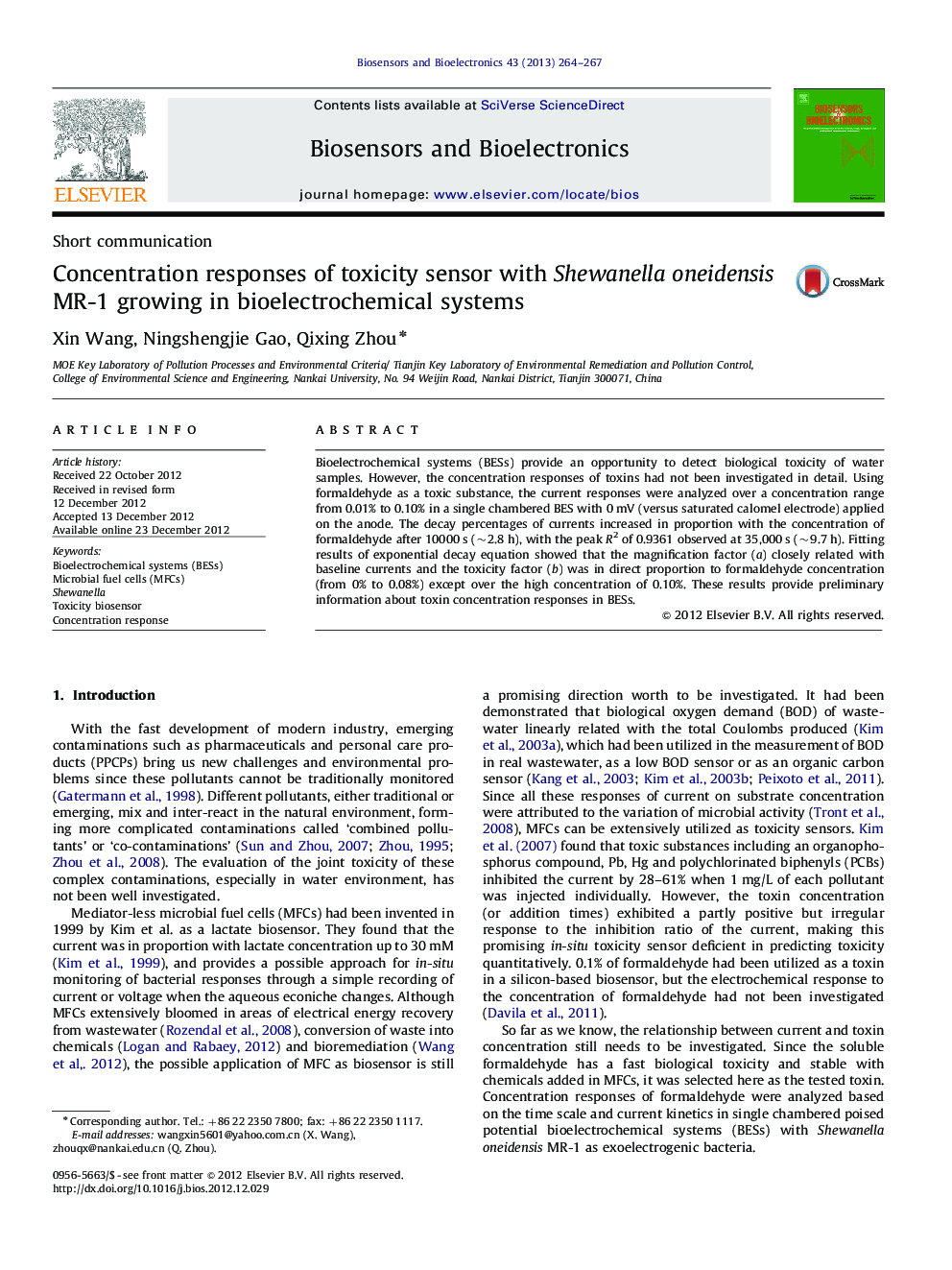| Article ID | Journal | Published Year | Pages | File Type |
|---|---|---|---|---|
| 866884 | Biosensors and Bioelectronics | 2013 | 4 Pages |
Bioelectrochemical systems (BESs) provide an opportunity to detect biological toxicity of water samples. However, the concentration responses of toxins had not been investigated in detail. Using formaldehyde as a toxic substance, the current responses were analyzed over a concentration range from 0.01% to 0.10% in a single chambered BES with 0 mV (versus saturated calomel electrode) applied on the anode. The decay percentages of currents increased in proportion with the concentration of formaldehyde after 10000 s (∼2.8 h), with the peak R2 of 0.9361 observed at 35,000 s (∼9.7 h). Fitting results of exponential decay equation showed that the magnification factor (a) closely related with baseline currents and the toxicity factor (b) was in direct proportion to formaldehyde concentration (from 0% to 0.08%) except over the high concentration of 0.10%. These results provide preliminary information about toxin concentration responses in BESs.
► Poised potential MFCs growing S. oneidensis MR-1 were constructed as toxicity sensor. ► Responses of formaldehyde concentration (Cf) from 0.01% to 0.10% were analyzed. ► The decay percentage of current was in proportion with Cf after 10,000 s. ► The toxic factor in exponential decay equation linearly related with Cf except 0.10%.
